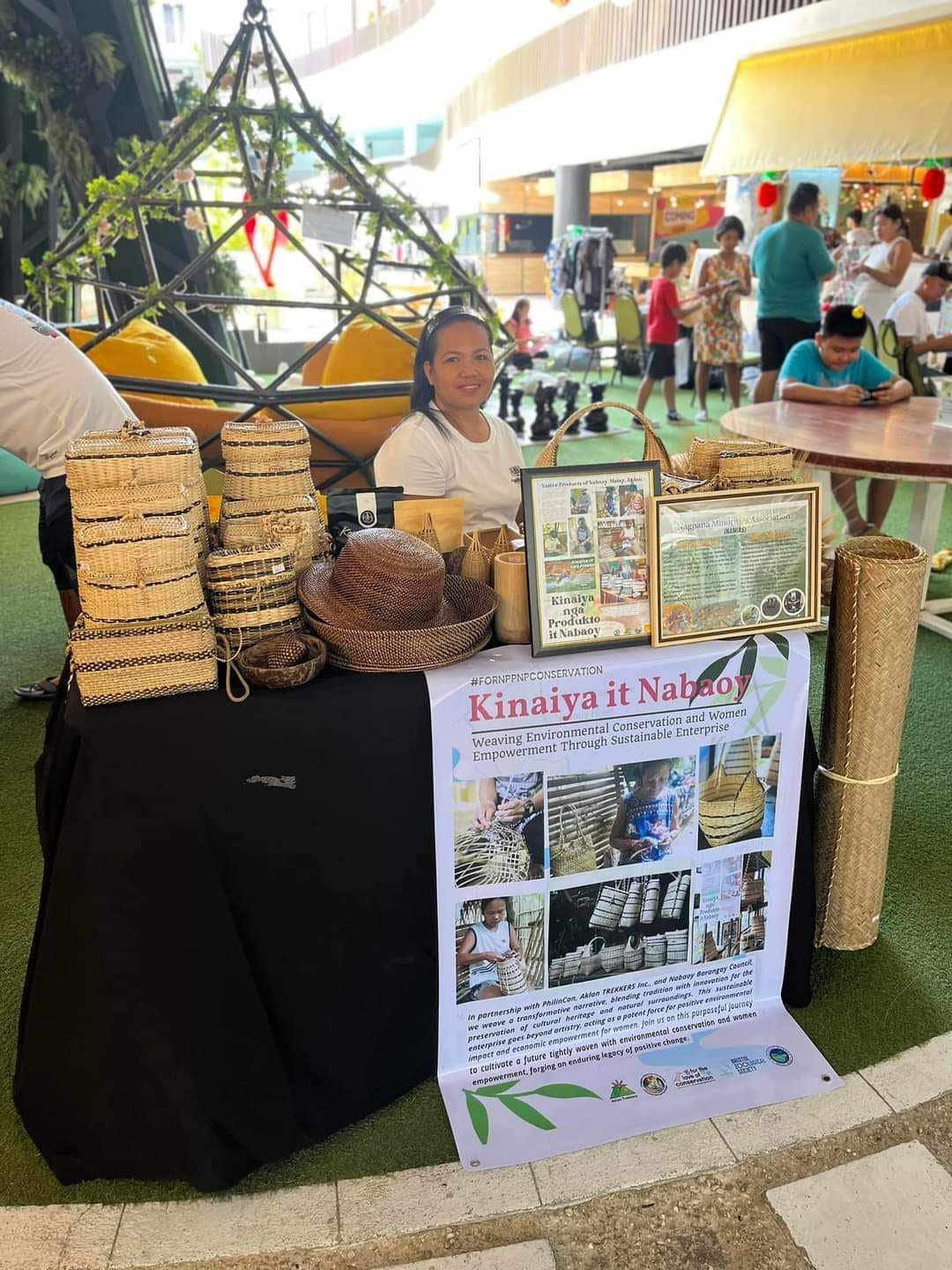
LOCAL STAKES Nabaoy women weavers create handicrafts that are then sold at Station X on Boracay Island. —Contributed photos
PANAY ISLAND, Philippines — In the northwest section of Panay lies the Northwest Panay Peninsula Natural Park (NPPNP), a protected area shared by the two provinces of Antique and Aklan. It is one of the few remaining low-lying rainforests in the country, and is also the lifeblood of the coastal ecosystems of Boracay Island, where the crest of terrestrial vegetation is closest to the coast.
Ridge to reef conservation efforts draw awareness to and appreciation for the crucial role of sustainability in managing these upland and coastal resources. There is a need to embrace the holistic approach in conservation, taking into consideration all the environments requiring such attention, from the top of the forests down past the shoreline to the coral reefs of the island.
People, businesses, and stakeholders of the island need to recognize that the island’s base capital for its tourism growth is the sustainability of the forest (ridge), which keeps the island (reef) healthy. The protected area, for one, is the source of water that supplies the whole island, from the headwaters and forest aquifers to rivers like Nabaoy in Malay, where the water is pumped from.
Mutual benefits
The mutual benefits of the ridge-to-reef strategy and the role of stakeholders in collective action toward the conservation and protection of the environment is a crucial element in the future of sustainable tourism for the island. This requires business and corporate support for the ridge-to-reef conservation initiatives in the communities. Appreciating this loop would lead to more authentic sustainable efforts that could generate better corporate decisions on ESG (environmental, social, governance) investing opportunities in the island.
“The future of sustainability lies primarily on the decisions the business sector has to make toward creation of more value-adding sustainability practices embedded in their systems, hoping in the long run that these become a business way of life,” according to the CFA Institute. “In many ways, we are moving from sustainable investing as a good idea to a reality that has implications for all investment portfolios. Being able to incorporate environmental, social, and governance (ESG) factors into investment decisions is becoming an increasingly important skill for anyone working in the investment industry.”
Nabaoy women weavers create handicrafts that are then sold at Station X on Boracay Island.
Local partnerships
While the Philippine Initiative for Conservation of the Environment and the People (PhilinCon) is strongly invested on the conservation of the NPPNP, investing on the communities existing around the protected area matters equally.
PhilinCon’s initial partnership with some local businesses in Boracay, specifically with Daloy PH and Aklan Trekkers, involves supporting livelihood projects and promoting their products, focusing on turning traditional crafts like weaving into sustainable enterprises. PhilinCon helps these communities market and sell their handcrafted products through the Localidad Collaboration Shop at Station X on Boracay Island.
This approach not only provides a platform for local artisans to reach a wider market, it also ensures that the profits generated are returned to the community, thus helping sustain and preserve the art of weaving.
Hue Hotels and Resorts Boracay, the host hotel for the weavers’ shop, offered its spaces for free to allow local weavers and craft makers to display and market their products. The establishment also actively promotes environmental conservation through various sustainability initiatives. Recognizing the ecological challenges faced by the island, including waste management and water conservation, the hotel integrates eco-friendly practices into its operations, among them reducing single-use plastics by offering reusable alternatives such as glass bottles, employing energy-efficient lighting, and conserving water by encouraging guests to reuse towels and linens.
“By selling these products in a tourist hot spot like Boracay, the collaboration taps into a high-traffic location where visitors can appreciate and purchase authentic local products, thereby contributing directly to the livelihood of indigenous artisans and the preservation of their cultural practices. This initiative combines economic empowerment, cultural preservation, and sustainable enterprise,” said Lhodie Caldeo, manager of Hue Hotel and president of Daloy PH.
Aklan Trekkers, a local organization advocating community development and environmental conservation, also believes that “this partnership will provide women weavers and craft makers a sense of pride and confidence in their craft, as well as insights on how they can improve their future sustainable management of community resources while preserving their cultural heritage.
“We’re weaving a transformative narrative blending tradition with innovation. This isn’t just about artistry, it’s a powerful force for positive environmental impact and economic empowerment for women,” said Ritchel Cahilig, Aklan Trekkers president.
Rebecca Cangayda Tandug is the executive director of the Philippine Initiative for Conservation of the Environment and the People.